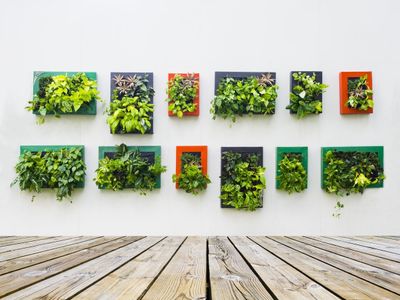Using Walls in the Garden
Garden walls may be adapted to be more than just a barrier but to also accent the garden and soften or enhance these privacy structures. Garden wall plants create a conduit between the manmade structure and the garden that they protect. They may also form a symbiotic relationship with the wall as it supports them and provides them with a foothold. Planting on walls is also the equivalent of a gardener’s “tag.” It gives you an opportunity to express your uniqueness and the way you view life. The first thing to consider is the type of wall or structure you have in the landscape. Is it sturdy? Does it have anything from which to hang plants? Can you drill into it or attach support assists, containers, hooks, and other items in any other way? You can overlook this if you have a temporary or moveable support against the wall. Often, the simplest idea to utilize a wall is to plant at its base. Garden wall plants that climb can clamber effortlessly over the wall, dazzling the eye and adding a counterpoint to brick and mortar. You may have to use some string or other support at the onset to help the plant up. While considering plant strategies and effects, your zone, site conditions, and the amount of maintenance you wish to do are all additional things to deliberate. Next, decide if you want evergreen or deciduous, climbing or hanging, flowering or foliage, and add these decisions to your theme. If you opt for climbing plants, make sure you have enough height for the maximum size at maturity the plant will become. Additionally, if you will need to prune the plant, the height of the wall may be an issue unless you want to get up on a ladder annually. Hanging plants may be in baskets, planter boxes affixed to the wall, in pots that are tucked into cracks and niches, or artfully and discretely planted on the top of the wall. Hooks that fit over the top of the wall can hold a container disguised by the plants and some moss tucked in around them to hide the supports. When growing plants on walls, avoid climbing plants that affix themselves to the wall with sticky pads. These scar masonry can rip up mortar if damaged or if they need to be pulled away.
Types of Plants for Walls
Using walls in the garden as planting areas expands your options in the home landscape. This type of gardening should be easy to maintain, have low maintenance, and still provide a screen or add lushness to a manmade structure. Some useful vine-type plants might be:
Clematis Dutchman’s pipe Honeysuckle Wisteria Climbing rose Grape Climbing jasmine Akebia Virginia creeper
For plants to place into the chinks and holes in older walls, try:
Creeping jenny Campanula Fairy foxglove Rock cress Ajuga Japanese painted fern Self-heal Sedum Sea thrift Yellow corydalis
If you choose to mount a container of some sort, you might use:
Succulents Ferns Annual flowers Herbs Lettuce and other smaller non-root vegetables Small ornamental grasses Small perennials
The sky is the limit, or rather the wall is, so try some unique combinations and cover that wall with simple but elegant beauty.
